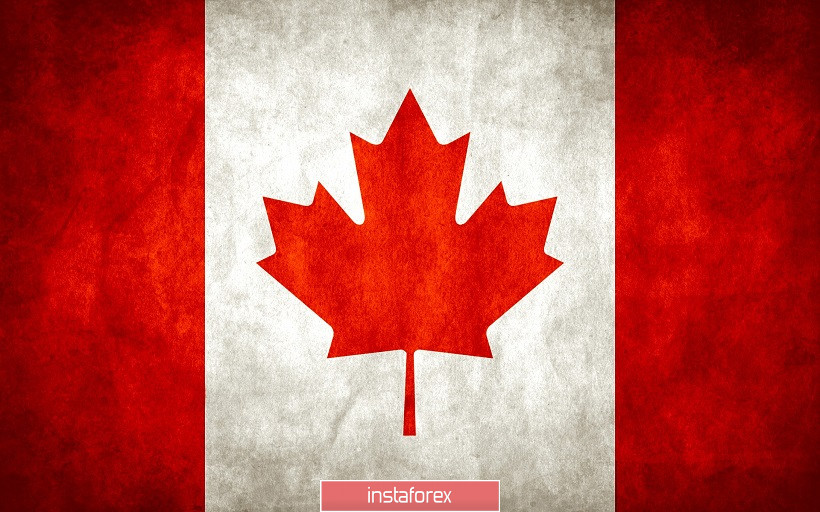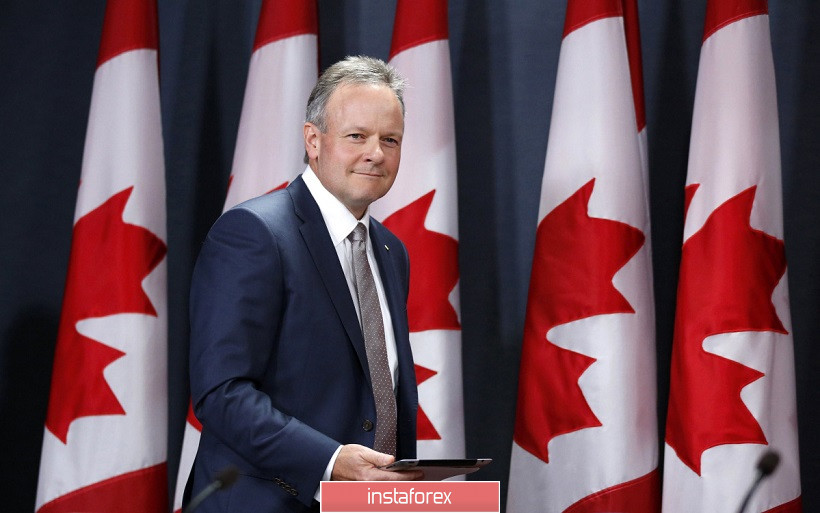The USD/CAD pair fell by almost 150 points yesterday, reacting to the fundamental background favorable to the Canadian dollar. Indeed, there is a white band in the Loonie as the results of the September meeting of the Bank of Canada that turned out to be quite encouraging. The oil market is showing recovery while the US currency is going through hard times amid recent comments by the Fed representatives.
This combination of fundamental factors allows the bears to expect a deeper price reduction - not only to the first support level of 1.3200 (the lower line of the Bollinger Bands on the daily chart) but also to the lower border of the Kumo cloud on the same timeframe, which corresponds to the price of 1.3160. A further decrease in USD/CAD pair to the base of the 30th figure (and below) depends on the further behavior of the US dollar. If tomorrow's Nonpharma disappoints and next week the Fed will take a more "dovish" position relative to general market expectations, then the downtrend will continue in the pair. Moreover, the Canadian also now has certain arguments on its strengthening.

It is worth noting that on the eve of the September meeting of the Canadian Central Bank (the results of which we learned yesterday), there was no consensus among experts on the future prospects of the monetary policy of the central bank. Some are confident that the regulator would follow the example of the Fed and soften its rhetoric, thereby announcing a rate cut before the end of this year. Other analysts were skeptical of this scenario, assuring their customers that Stephen Poloz would take a wait and see attitude. Each had its own fundamental arguments. For example, some representatives of the Canadian regulator focused on the effects of the global trade war, noting the fact that further escalation of trade conflicts would be the "biggest risk" for the Canadian economy.
In particular, the July consumer price index unexpectedly came out better than expected. On a monthly basis, the indicator left the negative area and reached 0.5% with a forecast of growth to 0.1%. In annual terms, the indicator remained at a two percent level. Although, it should have dropped to 1.7% in the general opinion of economists. Core inflation also rose and grew: the core index stood at 1.8% over the course of five months. However, in July, it exceeded expectations and rose to 1.9%. Data on the growth of the Canadian economy published last Friday complemented the positive outlook. All indicators came out in the "green zone", exceeding the forecast values. For example, the volume of GDP for the quarter grew immediately by 3.7% on an annualized basis with a growth forecast up to 3%. This has been the best result since the second quarter of 2017.
Thus, given the lack of consensus on the possible reaction of the Bank of Canada, yesterday's meeting results provoked increased volatility for the USD/CAD pair. It turned out that members of the Canadian regulator did not intend to mitigate monetary policy in the near future as they emphasized that the current level of accommodation is "acceptable" today. At the same time, the regulator did not talk about possible further actions regarding the rate and the text of the accompanying statement was twofold.
On the one hand, the Central Bank excluded from the statement is the wording on the need to "closely monitor the development of the situation in the energy sector". On the other hand, the regulator again focused on the influence of external factors on the prospects for the development of the national economy and Canadian inflation. On the one hand, Stephen Poloz noted a significant increase in inflation and wages. But, on the other hand, it drew attention to the weak dynamics of consumer spending and a reduction in business investment. In addition, according to the head of the Central Bank, July inflation was stronger than forecasts "mainly due to temporary factors."

In other words, the Bank of Canada did not openly demonstrate the "dovish" attitude, limiting itself to restrained comments on the current situation. Nevertheless, compared with the comments of some representatives of the Fed (in particular, Bullard and Rosengren), the position of the Canadian regulator looks encouraging. By and large, a further reduction in the Fed rate in the framework of this year is already a settled issue. The market only discusses the extent of this decline. If earlier traders had no doubt that the regulator would limit itself to a 25-point step, then a larger-scale scenario loomed on the horizon followed after the corresponding statements by the members of the Federal Reserve.
Thus, the probability of a 50-pound rate cut at the September meeting is estimated by the market to be at 20%, although a week ago, the probability did not exceed 5%. In general, traders are almost sure that the Fed will lower the rate next week (the question is only 0.25% or 0.5%) and announces further steps in this direction. Such a de-correlation of monetary strategies puts significant pressure in the USD/CAD pair. If tomorrow's US labor market data disappoint investors (with the Canadian Nonfarm growing at the same time), the pair may fall not only to the base of the 32nd figure but also to the current resistance level of 1.3160 (the lower border of the Kumo cloud on D1 ).





















